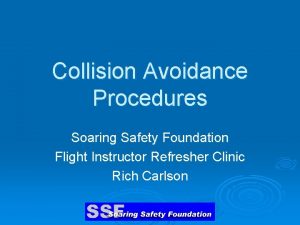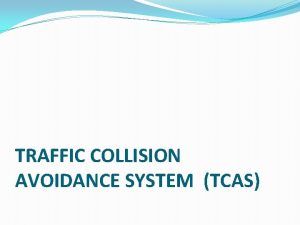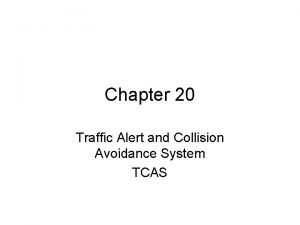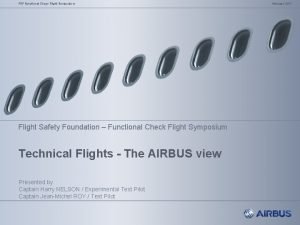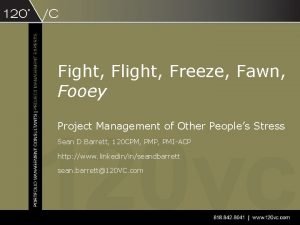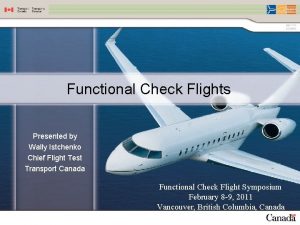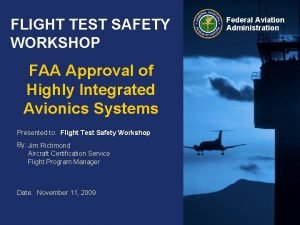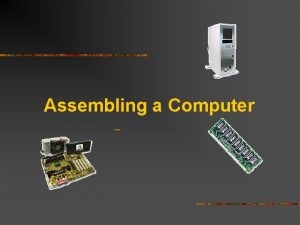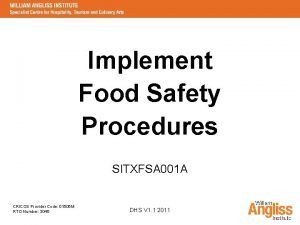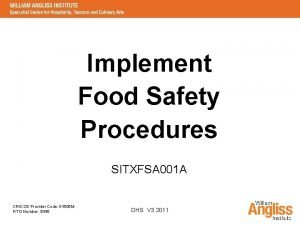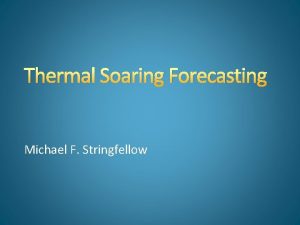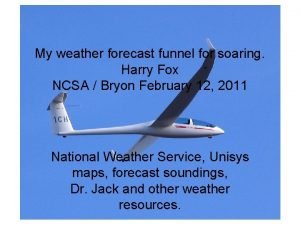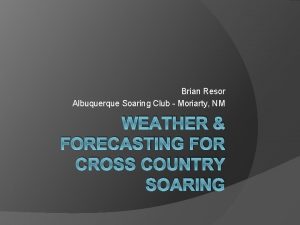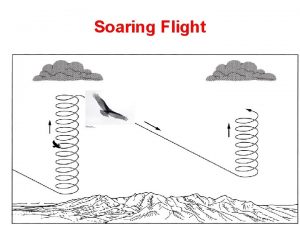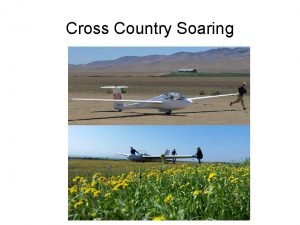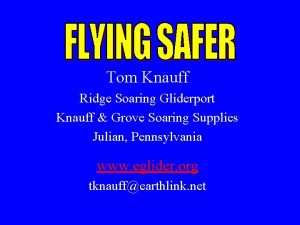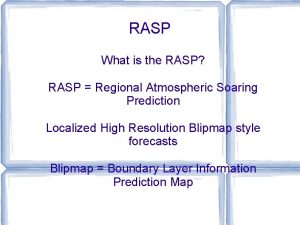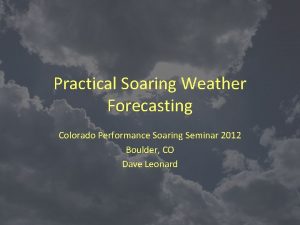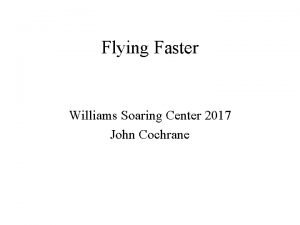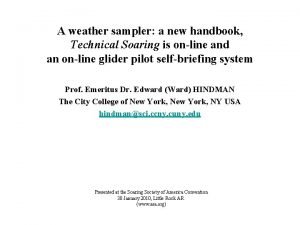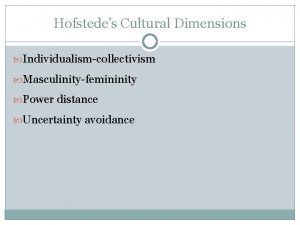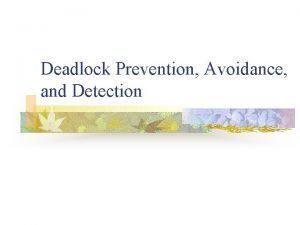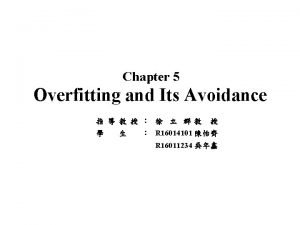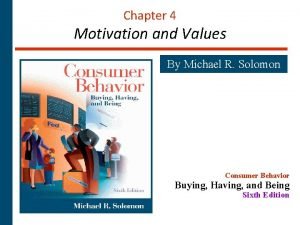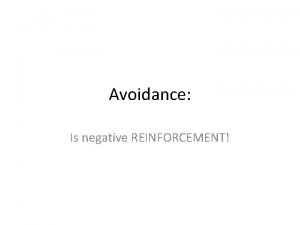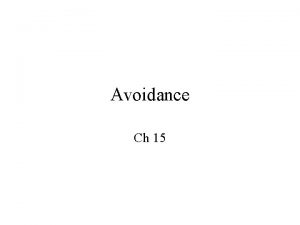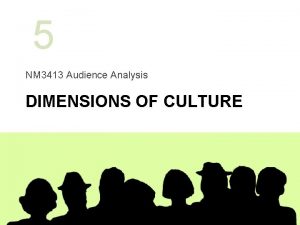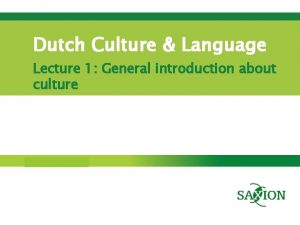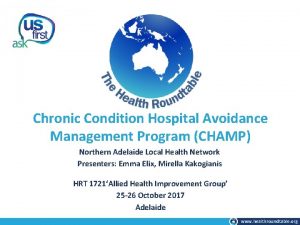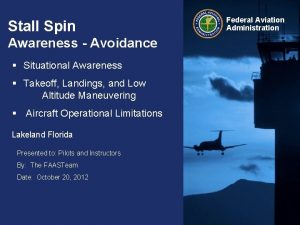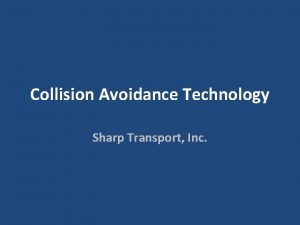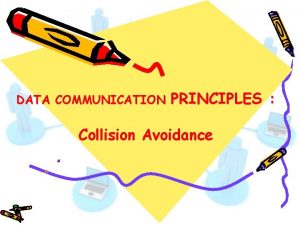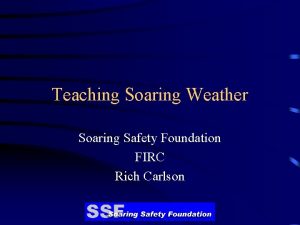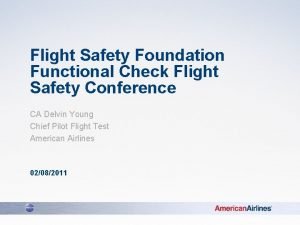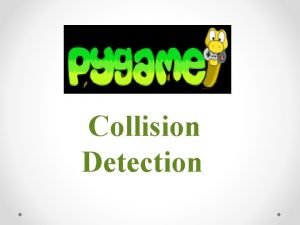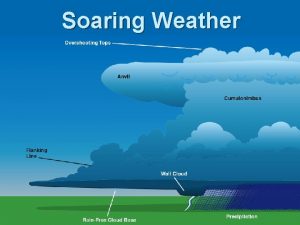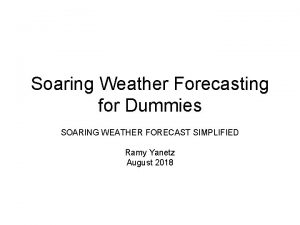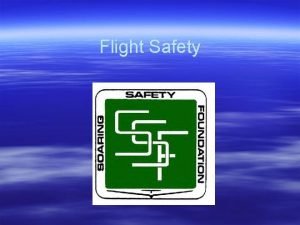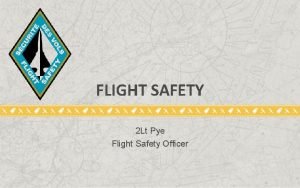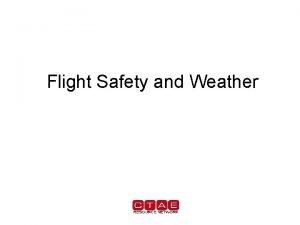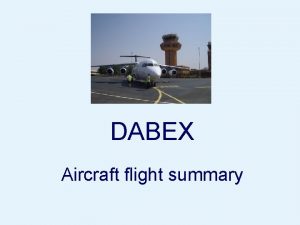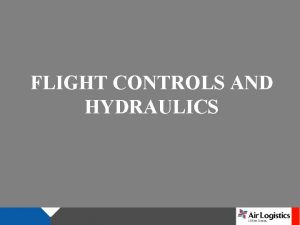Collision Avoidance Procedures Soaring Safety Foundation Flight Instructor








































- Slides: 40

Collision Avoidance Procedures Soaring Safety Foundation Flight Instructor Refresher Clinic Rich Carlson

Sharing Airspace


Regulations Ø FAR 91. 113 (b) l Regardless of … IFR or VFR … all pilots will observe “See and Avoid” procedures Ø Advisory Circular 90 -48 C l Pilots role in collision avoidance Ø AIM Section 4 -4 -13 (d) l Describes effective scanning techniques

See and Avoid Ø Basic Concept l Look outside and avoid running into other aircraft!

See and Avoid Ø Advantages l l Uses Mark I human eyeball Low regulatory overhead Ø Limitations l Pilot must recognize hazard and take action

Mark I Eyeball Supplement Page 8

Problems Ø Physiological issues l l Blind spot Empty Field Myopia Ø Physical obstructions l l l Seat location Canopy rails Instruments

Visual Scanning Ø Peripheral vision detects motion Ø Foveal vision identifies objects Ø Proper scanning procedures l l l Use multiple sectors (10 deg) Stop in each sector for a second or 2 Focus on distant object

Known Hazardous Areas Ø General areas l l Near VOR’s In and around Class D, C, and B airspace Near victor airways Within 5 miles and 3000 ft of an airport

Known Hazardous Areas Ø Glider Specific l l l Thermals Start/Finish Gate Turnpoints Ridge line Others

Aircraft Markings Ø Anti-collision markings l l A study by the OSTIV TSP found that high visibility color (Safety Orange) reduced the visibility of a glider Highly reflective ‘mirror’ tape did a much better job

Visual Perception Ø The blocks on the lower left mark the danger area for the speeds quoted, when aircraft are on a collision course. This danger area is based on the recognition and reaction time shown in the table on the lower right. Ø From AC 90 -48 C

Reaction time in seconds

Visual Perception Ø Move back 12 feet from this illustration. From that position the silhouettes represent a T-33 aircraft as it would appear to you from the distances indicated in the table on the left. The time required to cover these distances is given in seconds for a combined speed of 360 and 600 mph. Ø From AC 90 -48 C


Is a collision imminent?










Position Reporting Ø Where am I Ø Where are you Ø Aids to position reporting l l l GPS distance/bearing Altitude Known ground reference

Electronic Aids Ø Radio’s Ø Transponders l l Operation limitations Glider only codes

Portable Collision Avoidance Boxes PCAS - XRX PCAS - MRX http: //www. zaonflight. com/

Situational Awareness Ø What’s happening now Ø What’s going to happen next Ø What’s going to happen soon Ø What’s he going to do

12 Action Items from Jim Short’s “Airspace in the New Century” Prominent posting of airline arrival/departure routes and expected altitudes Ø Post NOTAMs for meets and contests Ø Define local areas that are relatively safe Ø Voluntarily avoid high risk areas Ø Increase our personal vigilance at critical altitudes Ø Consider a Mode C transponder Ø Supplement Page 7

Summary Ø Remember – most mid-airs and near mid- airs occur during the day, in VFR conditions, close to an airport Ø See and Avoid procedures need to be taught








 Empty-field myopia
Empty-field myopia Soaring safety foundation
Soaring safety foundation Tcas collision avoidance
Tcas collision avoidance Collision avoidance system block diagram
Collision avoidance system block diagram Functional check flight procedures
Functional check flight procedures Sutterhe
Sutterhe Functional check flight procedures
Functional check flight procedures Flight test safety workshop
Flight test safety workshop Chapter 10 workplace safety procedures
Chapter 10 workplace safety procedures Computer safety procedures
Computer safety procedures Implement food safety procedures
Implement food safety procedures Implement food safety procedures
Implement food safety procedures Shallow pad foundation
Shallow pad foundation Foundation standard 1 academic foundation
Foundation standard 1 academic foundation Rasp soaring forecast
Rasp soaring forecast Dr jack soaring forecast
Dr jack soaring forecast Albuquerque soaring club
Albuquerque soaring club Soaring eagle nursery
Soaring eagle nursery Condor soaring
Condor soaring Cross country soaring
Cross country soaring Ccsc soaring
Ccsc soaring Ridge soaring gliderport
Ridge soaring gliderport Rasp blipmap
Rasp blipmap Boulder soaring forecast
Boulder soaring forecast Williams soaring center
Williams soaring center Technical soaring
Technical soaring Colvestone primary school
Colvestone primary school Risk avoidance insurance
Risk avoidance insurance Avoidance risk
Avoidance risk Ruth anne rehfeldt
Ruth anne rehfeldt Power distance map
Power distance map Deadlock prevention avoidance and detection
Deadlock prevention avoidance and detection Overfitting avoidance
Overfitting avoidance Motivational conflict in consumer behavior
Motivational conflict in consumer behavior Avoidance contingency example
Avoidance contingency example Avoidance contingency example
Avoidance contingency example Laray m. barna (1997)
Laray m. barna (1997) Wake turbulence avoidance
Wake turbulence avoidance Edward t hall
Edward t hall Hospital avoidance
Hospital avoidance Spin avoidance
Spin avoidance
